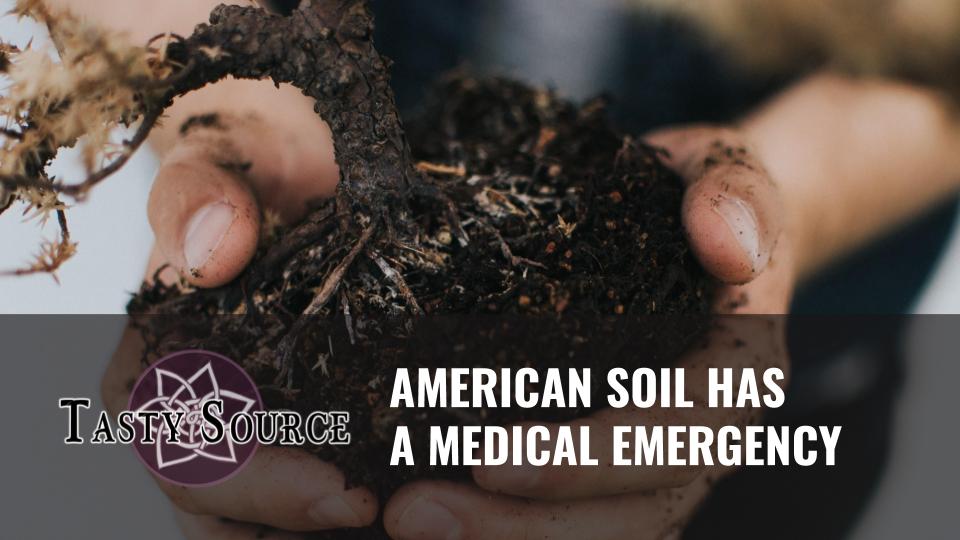
The priority of industrial farming is to grow and harvest a lot of food, fast. In a way, it’s the fast food version of farming. Nearly all advancements in big farming since the industrial revolution has been made for the sake of higher yields and quicker processes. When speed and yield is the priority, health and sustainability tends to be overlooked. And, there’s no clearer sign of the environmental destruction of bad farming than bad soil.
Unfortunately for American soil, it has been stripped of its health for the sake of high production for a couple hundred years. Fields are continuously being planted with the same crops and are heavily tilled between each rotation, which rips and turns up any organic matter, exposing some of it to the sun and halting its progress towards a stable ecosystem. While no-till practices and permaculture strategies are on the rise, the majority of farms stick to their traditional approach to farming out of habit, ease and ignorance.
Industrial agriculture has spent years ignoring the signs in the soil. Many farmers have made sandy, organic matter deficient soil out of what once was rich, thriving and connected soil. An article published by Politico explains that “since colonial times, U.S. soil has lost about half its organic matter.” The energy in the soil that regulates the growth of plants and the synchronization of insects is dependent on biodiversity. If the ecosystem of a particular place is thrown off balance, issues arise like irregular pest behavior, disease, nutrient-deficient crops, etc.
There’s a spectrum of unsustainable farming practices, from high-damaging practices like pesticide spraying to low-damaging practices like light tilling. The majority of farms, big and small, approach farming in unsustainable ways—it’s high risk and seemingly low reward to break out of the mold. On top of it all, there is little incentive to farm any other way.
A major negative impact to American soil is that there are a ton of farmers that grow the same crop every year because of government grants that specify the production of the same crop. The financial pressure of running a farm without government support is already too high, so many farmers adjust their practices to follow the rules of the grants they seek.
While heavy tilling saps organic matter from the soil, lack of crop diversity and crop rotation strategies can lead to nutrient-deficiencies. According to an article in modernfarmer.com, The three most important nutrients in soil are phosphorus, nitrogen and potassium—different crops draw unique levels of each nutrient, so rotating crops to keep these nutrients balanced is key in preserving the health of the soil. The article goes on to explain that some of these nutrients either take a lot of energy to make or a lot of effort to mine, so much so that in the future they may rival oil as the most valuable raw materials in the world!
What all of this means is that American soil has a medical emergency, and it’s up to everyone to turn things around. We need consumers demanding their food be grown sustainably while avoiding the more convenient buying options at the store. We need farmers experimenting with low-till/no-till, compost, crop rotation and cover cropping strategies. We need government relief to incentivize regenerative practices instead of fast farming practices.
Regenerative and sustainable
![]() Take Action:
Take Action:
| Take Classes | Get Consultations | Contact Us |
![]() Navigation:
Navigation:
| SiteMap | Informational Pages | About Us | Farms | Markets | Businesses |
![]() Most Recent Blog Posts:
Most Recent Blog Posts:
©2022 tastysource.com